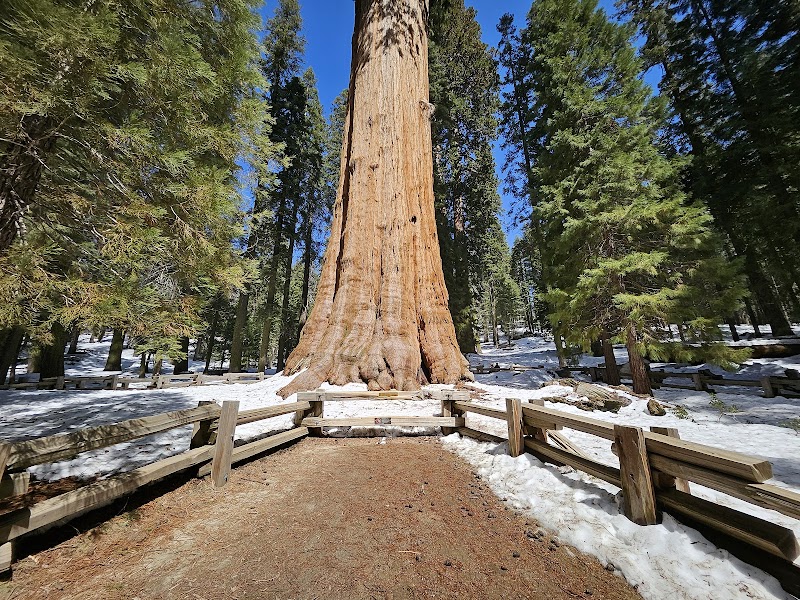
June 11 Fire Restrictions: Staying Safe and Prepared in Sequoia & Kings Canyon
Sequoia and Kings Canyon National Parks will institute Stage 1 fire restrictions starting June 11, 2025, to curb wildfire risks in vulnerable lowland campgrounds and wilderness areas. Learn what these rules mean for your trip and how to stay safe while exploring some of California’s most stunning wild landscapes.
Use Approved Stoves Only
Gas, propane, and alcohol stoves are allowed even under restrictions—switch to these to safely cook your meals without risking fire hazards.
Check Your Vehicle’s Maintenance
Ensure your vehicle has proper spark arrestors and is in good running order to prevent fires caused by faulty exhaust or sparks while driving in park areas.
Verify Campground Status
Confirm which campgrounds are open, as some remain closed due to storm damage. Visit the official park website or talk to a ranger before arrival.
Fully Extinguish Campfires
If campfires are allowed in your area, make sure they are completely out before sleeping or leaving. Use water and stir ashes to cool thoroughly.
June 11 Fire Restrictions: Staying Safe and Prepared in Sequoia & Kings Canyon
When Fire Risks Rise: Navigating Stage 1 Restrictions in Sequoia and Kings Canyon National Parks
Starting 6 a.m. on June 11, 2025, Sequoia and Kings Canyon National Parks will enter Stage 1 fire restrictions, introducing a critical shift for anyone planning to explore these iconic Sierra Nevada landscapes. Wood and charcoal fires—including wood-burning stoves—will be prohibited in campground and picnic areas at elevations of 3,000 feet and below, such as Potwisha Campground and Hospital Rock and Foothills Picnic Areas. These measures focus on protecting vulnerable lower elevation zones that dry out rapidly, especially after the wet winter.
This stage of restrictions extends into wilderness areas below 6,000 feet elevation, prohibiting wood and charcoal fires, alongside smoking bans unless confined to enclosed vehicles, residences permitting smoking, or designated areas. These rules aim to prevent accidental ignitions that could spread quickly across the dry forests.
Fire Management Officer Leif Mathiesen notes, “Despite recent wet conditions, low-elevation Sierra Nevada ecosystems can ignite rapidly. These restrictions are preventative steps firefighters rely on to safeguard visitors and park lands.”
While gas, propane, alcohol, and tablet or cube stoves remain permitted, visitors should confirm specific regulations via their wilderness permit or consult trailhead rangers for details tied to their routes or campsites. Some campgrounds, such as South Fork and Buckeye Flat, remain closed due to severe 2023 storm damage, making awareness crucial.
Visitors are advised to inspect vehicle maintenance thoroughly—spark arrestors and clean exhaust systems help lower fire risks. Campfires are only allowed in official, built-in fire rings at front-country sites and must be fully extinguished before nightfall or leaving. Fireworks remain banned year-round.
Prescribed burns by park crews will continue as part of long-term vegetation management and wildfire mitigation. Stage 1 restrictions will stay in effect until significant environmental or weather changes occur.
Prepare your next trip with this safety-first mindset and respect for fire dynamics within these fiercely resilient forests. For the latest updates and details, visit the National Park Service page on fire restrictions: https://www.nps.gov/seki/learn/nature/fire-restrictions.htm.
By observing these guidelines, your adventure through Sequoia and Kings Canyon stays thrilling—and safe.
Nearby Trips
All Adventures
Boat Charters
Water Activities
Adventures near Three Rivers, California
Discover the unique and memorable adventures that make Three Rivers, California special.
Frequently Asked Questions
What exactly does Stage 1 fire restriction mean for campfires?
It means that wood and charcoal fires, including wood-burning stoves, are prohibited below 3,000 feet in campgrounds and picnic areas, and below 6,000 feet in wilderness areas. Only gas, propane, alcohol, or tablet stoves are allowed.
Are smoking and fireworks allowed during these restrictions?
Smoking is prohibited below 6,000 feet except inside enclosed vehicles, private residences, or designated smoking areas. Fireworks are banned year-round in both parks.
Can I bring my own firewood into the park?
Firewood use is discouraged due to fire risk and invasive species concerns. If permitted, only local wood from designated areas should be used, but under Stage 1 restrictions, wood fires are banned in applicable zones.
Which campgrounds are currently closed due to storm damage?
South Fork and Buckeye Flat Campgrounds remain closed following major storm damage in early 2023. Always check the park’s official site for up-to-date closures.
Are prescribed burns affected by Stage 1 fire restrictions?
No. Fire crews will conduct prescribed burns independently as part of wildfire prevention and vegetation management.
How long will these fire restrictions last?
Stage 1 fire restrictions remain in effect until environmental conditions improve significantly, such as changes in humidity or precipitation.
Recommended Gear
Portable Gas Stove
Allowed under restrictions and safer than wood fires; essential for meal preparation.
Water Bottle with Filter
Staying hydrated is vital in dry, hot conditions—filtered water is safer for the backcountry.
Sturdy Hiking Boots
Protect your feet on uneven terrain, especially on rocky or root-covered trails below 6,000 feet.
Fire Extinguisher or Water Container
Carry a small extinguisher or extra water in case of emergency when near official fire ring areas.
Local Insights
Hidden Gems
- "Potwisha Campground’s quiet trails"
- "Unmarked vantage points near Hospital Rock"
- "Foothills Picnic Area’s lesser-known creekside spots"
Wildlife
- "Mule deer grazing at dawn"
- "Rare sightings of the Sierra Nevada red fox"
- "Early morning calls of spotted owls"
History
"The area holds deep cultural significance for the Western Mono tribe, whose presence shaped land stewardship practices long before the parks’ establishment."
